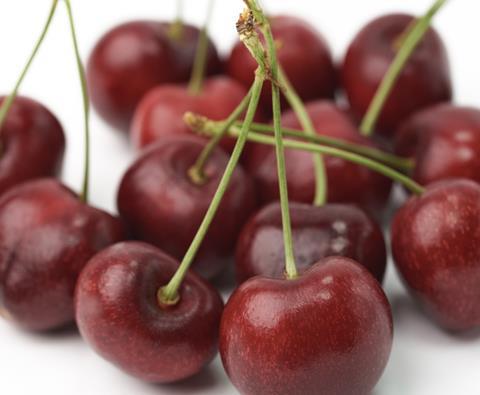Members of the executive team set out the opportunities and challenges for cherries and table grapes in the new year
The ability to grow low-chill cherries in more regions of the world will become a reality in 2024. So says Alwyn van Jaarsveld, international commercial cherry manager at Bloom Fresh, which has just published its cherry and table grape trends and predictions for 2024.

As the climate gets warmer and drier, growing cherries is becoming more challenging in many parts of the world. This is why eight years ago, IFG created its low-chill cherry programme, Cheery Cherries, to allow growers to harvest cherries with fewer chill hours during the winter so that the fruit ripens earlier in the season with more heat tolerance than the average cherry.
Now Bloom Fresh, the new company resulting from the recent merger of IFG and SNFL, has expanded the programme into warmer climates as growers seek new solutions to global warming.
In areas with unpredictable water levels, Bloom Fresh says low-chill cherries can provide a high-value alternative to more water-reliant crops such as avocados or citrus. Moreover, they can extend the growing season by one or two months, allowing the cherry industry to get closer to year-round supply.
In table grapes, meanwhile, Bloom Fresh anticipates an improved logistics outlook that will help create new opportunities for growers around the world. “In 2024, pressure on the global supply and transport chains that impacted the 2023 table grape sector is predicted to ease, with input prices and shipping decreasing across the board,” says CEO Kenneth Avery. “This trend will entice producers and growers around the world to expand as consumer appetites for table grapes increase.”
Avery predicts that Bloom will continue to expand its operations in Peru, with the focus on high-quality green seedless grapes, including Sweet Globe, Timpson, and Ivory destined for North America.
He also anticipates a recovery in Chilean exports after recent historically low figures. “Despite enduring years of challenging weather conditions, such as prolonged droughts and destructive rains, coupled with economic pressures from escalating labour and material costs, growers in the region express cautious optimism,” he says.
“The growth drivers include enhanced product quality, robust industry relationships, and the availability of new genetics and market opportunities, collectively contributing to a compelling outlook for expansion.”
Avery also sees growing opportunities for Sweet Celebration in South Africa and Sweet Sapphire and Sweet Globe in Australia.
Jennifer Maguire, Bloom Fresh’s director of global licensing, says the company continues to push against the rising tide of commoditisation and lead industry efforts to develop healthier and tastier varieties for the category. As well as the popular Cotton Candy and strawberry-flavoured Candy Snaps varieties, developed to entice the consumer and add value to the product, Bloom has a number of new varietals in development, including grapes with antioxidant levels that surpass even blueberries.
While table grapes as a category are moving forward with greatly improved varietals on offer, Maguire notes that the sector has not been without challenges, not least the severe and erratic weather events around the world that have impacted California and Peruvian volumes.
“That said, table grape market conditions are strong and greatly improved from previous years, and the average price has risen in the latter part of 2023 due to a reduced and limited supply of grapes,” she says.
“Table grapes are a nutritious and affordable luxury in the supermarket basket. Price sensitivity is a concern for producers and retailers, so the industry is working hard to ensure the consumer has a great eating experience every time. Bloom is helping to ensure this by providing a diverse portfolio of grape varieties in terms of flavour, colour, and seasonality.”
With licensed producers in 20 countries to fulfil year-round consumer demand, Bloom Fresh supports its varietal brands with experienced quality assurance and technical teams who work with producers, inspecting fruit from the field to the markets all year round.
“The market is overall optimistic, renewing interest in investing in vineyards, replacing older varieties and lifting consumption,” Maguire continues. ”Bloom is focused on driving consumption by developing great tasting, healthy grapes and refining grape flavour categorisation to simplify the vast array of varietals for consumers to navigate.”
As with cherries, extreme weather will continue to have far-reaching consequences for table grape growers into 2024, but new technologies and techniques will help them offset some of these challenges.
Bloom Fresh breeder Dr Chris Owens says intense rains across many parts of the world have negatively impacted production. At the same time, the availability of chemical crop protection is decreasing. This means more emphasis will be placed on genetic improvements, with advanced selections exhibiting powdery mildew and downy mildew disease resistance.
”These varieties are essential to advancing sustainable production, as they are bred to reduce production costs with fewer chemical sprays, reduce phytosanitary residues, and reduce losses due to rot and infection,” he says.
“Bloom is taking a proactive, combined approach to safeguarding growers’ crops. Innovative technologies in both breeding and growing are helping to offset some of these challenges. For example, where humidity or excessive rainfall can be predicted, the Bloom technical team has encouraged the use of plastic covers and netting are recommended.”
In terms of breeding more robust table grapes, Owens notes that Bloom’s new genomic technologies mean major fruit breeders can generate vast amounts of data at a very low cost, compared to historical standards. Linking this genetic data with vital plant breeding data that can go back decades allows the R&D team to breed fruit that is healthy, robust, and tasty.
Despite the many challenges growers face, Owens and the other Bloom executives are optimistic that 2024 will be a good year for new and exciting produce.



